First rides with the Mondraker Dusty XR
The Mondraker DUSTY has just been presented to the public. With it the Spanish brand inaugurates a category unexplored to date. Mondraker, a manufacturer dedicated for years exclusively to MTB, including great results in World Cups, both DH and XCO, makes the leap to gravel and does so directly with an assisted bike.
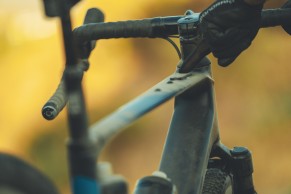
A revolution at Mondraker
Being a brand with so much personality and with this trajectory, from the very beginning we could imagine that the character of the DUSTY would be that of a "hardcore" bike, with qualities that go beyond what you can expect from any e-Gravel.
The DUSTY is the choice of those who want to pedal their gravel bike anywhere on the planet. It has a compact and absorbent frame that provides comfort. Together with a contained weight thanks to the use of the MAHLE X20 engine, which also provides a gradual and unobtrusive assistance.
The best place to show its capabilities
RECOMENDADO

The best apps for cycling and mountain biking

Black Friday 2025 cycling bargains: save on Garmin, POC, Maxxis and more

Black Friday Garmin 2025: the ultimate guide to choosing your GPS at the best price

Which profile wheels to choose according to the area where you live: mountain, flat or coast

How to wash your cycling clothes? 10 keys to make them always look new

Cycling can help you fight the effects of the time switch
The Costa Blanca was the place chosen for the presentation of the Mondraker DUSTY, an area well known by the MTB fan for its multitude of trails, slopes and technical areas. A place where some of the most famous MTB stage races of the Spanish geography take place at the beginning of each year, thanks in part to its good weather and mild temperatures.
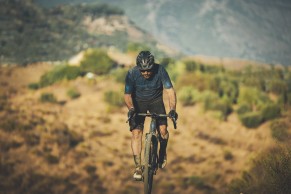
We had prepared two days to give the first pedal strokes at the controls of the DUSTY. The first day we would face the longest and steepest day, in which we could squeeze all its qualities. On the other hand, for the second day we would have the possibility to enjoy the area riding the new Mondraker e-Gravel.
The Mondraker DUSTY XR was the model we had the opportunity to test. The top of the range, equipped with components focused on making the most intense gravel days easier.
Assistance makes the experience more enjoyable
The first contact started on a chilly morning. After adjusting the bike for the long day ahead, we began to pedal. The feeling of cold would not last long, because from the first moment we started with a climb that alternated part of asphalt with wide lanes.
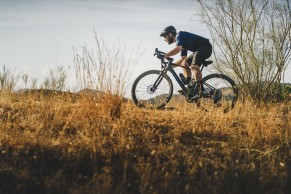
Almost from the start we were able to play with the different assistance modes of the MAHLE X20. Mondraker told us that they had found the perfect combination for gravel using this engine.
The power delivery is quite subtle in assistance mode 1, moving away from the torque of the most powerful e-bike motors. Thanks to the control of the power exerted by the biker, which is done from the bottom bracket, the MAHLE X20 is supplying assistance in this mode with a factor of 1.25 by the power exerted by our pedaling. And with the cadence reading, it is able to graduate the thrust input so that we always feel the assistance in the most similar way to our pedaling.

In the steepest parts of the climb we use modes 2 and 3. In these cases the power input is more appreciable. It is still a progressive input but we already notice that we have more assistance. Let's not forget that this is a motor that gives us 23 Nm of torque at the hub, which is roughly equivalent to 55 Nm at the bottom bracket, enough to overcome steep slopes even if we carry our e-Gravel loaded with material. These modes multiply our exerted power by 1.5 or even 3 respectively.
Sensations close to those of an MTB of the 90s
Once we finished the first climb we faced what was the most technical descent of the route. After the good taste that had left us the performance of the Mondraker DUSTY uphill, with its little intrusive assistance and its stiffness when pedaling, it was time to put it to the test downhill.
This is where it stands out from other bikes on the market. Its qualities focused on a more aggressive gravel provide confidence at all times. The absorption power of the frame is surprising, since as we mentioned, in climbs it had good stiffness when applying pedaling forces.

On the other hand, the 40 mm RockShox Rudy fork and the Reverb XPLR AXS seatpost gave us that extra confidence both to overcome obstacles and to gain speed on the trails.
It's a bike that launches easily and goes faster than we could have expected. To the point that it led us to have to precisely measure the moment of braking.
The 700X45C tyres gave the feeling of having a smaller balloon, perhaps caused by the 23mm inner width of the Mavic Allroad Pro Carbon SL. We even wondered what the 50C width tyres would be like, as the DUSTY encourages you to go fast even in the most complex areas.
Non-dragging and able to reach anywhere
The second climb of the day started with a ride up the Tudons pass. It was the ideal moment to test the DUSTY without assistance. With the engine off the system is completely decoupled, acting as a conventional hub, eliminating any friction or loss of watts during our pedaling. A nice sensation.
The second third of the climb was on a track in good condition. There we took the opportunity to squeeze the MAHLE X20 to the maximum. When the bike launches and reaches 25 km / h, the engine does not cut off abruptly, it does it progressively until it is disengaged at 27 km / h. It does the same when it has to assist again.
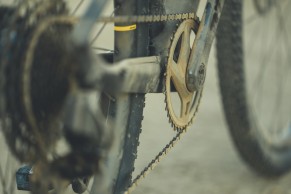
Before entering the final part, we take the opportunity to change parameters in the MAHLE App. The standard DUSTY configuration is specific to Mondraker, but it is possible to vary the engine maps in a simple and intuitive way. This uphill section had a very steep rocky area. It was another of the areas that led us to think that this bike is designed to reach any place you consider. Using mode 3 we advanced until we reached the top of the pass.
In addition to being an unobtrusive assistance, pedaling becomes even more natural when using components similar to those of a traditional bike, such as cranks.
The Mondraker Forward Geometry concept taken to gravel
Having a hub motor facilitates the geometry design and makes it possible to achieve numbers similar to those of traditional bikes. In this case Mondraker remains true to its Forward geometry line.
A rather long reach of 405 mm in size M, which was the one used on our two test days. This is compensated by the use of a 70 mm stem and a 74° saddle angle, which gives us the feeling of riding a more compact bike throughout the ride. In addition, the more centered pedaling position makes for more effective pedaling.
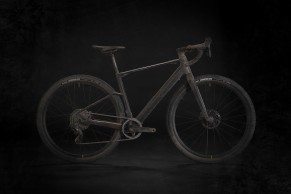
The head angle of 70° and a wheelbase of 1056 mm gave us stability in fast areas and safety in the more technical sections.
A geometry that transmitted us comfort while providing the bike with greater capacity in any situation, which will take our gravel days to a higher level.
Greater integration and less noise
Compared to the MAHLE X35, the engine noise has been reduced. It is still noticeable especially in modes 2 and 3, but in mode 1 it even blended in with the sound of the bike when riding off-road. According to the manufacturer, the sound level is below 35 decibels.
In terms of integration, this has seen its volume reduced, making it less visible to the eye. All its cables, both electrical and brake, inside the frame tubes and the solution created for the electrical connection of the hub with the rest of the system give a plus of cleanliness to the aesthetics of the bike.

The other electrical components are also well integrated and easy to use. The Head Unit placed on the top tube is now easier to interpret with the color coding for the modes and the battery level represented by a color bar. But having the PulsarONE wireless display undoubtedly detracted from the Head Unit, as it has all the information we need and is much more in view, even allowing us to change modes when we have our hands on the central part of the handlebars.
Finally, the eShifter buttons are almost perfect for these gravel handlebars. We say almost, because despite making it very easy to change the assistance mode, in our opinion they were a bit far from our fingers. Easily solvable detail if we are a little handyman and place them higher under the rubber of the levers. They emit vibration alerts when pressed, although we could only appreciate it when we rode on the road.
More energy to go further
There was only a quick downhill trail to reach the end of our route. We finished the ride with 50 kms and more than 1600 m of accumulated elevation gain. We started with a full 350 Wh battery charge and arrived back with just over 40%. According to the App we used the assistance more than 80% of the time, so we can say that it has a fairly high autonomy, allowing us to make much longer trips. Even if you are one of those who like to extend your outings to the maximum, it has the possibility of including a Range Extender of 172 Wh and 1.1 kg of weight, which extends the autonomy by almost 50% extra.
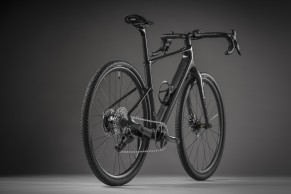
The possibility of configuring engine maps is a way of varying consumption, which is also a variable to be taken into account when estimating range.
Conclusion
The Mondraker DUSTY is an e-Gravel where assistance makes more sense than ever. Such a capable bike will take you more places, and you'll usually find yourself in situations where you'll not only need a little power, but will be looking to unleash the full potential of the engine to get you where you want to go.
It stands out for having a contained weight of the set, thanks in part to the only 3.2 kg of the entire electrical system. Its frame is absorbent and the geometry makes the bike confident in all situations. It is complemented by a setup oriented to gain comfort and safety.
It has unquestionable levels of integration and as a good gravel bike is equipped with numerous anchorages for mudguards and bikepacking accessories.
In short, with the Mondraker DUSTY you can enjoy a more aggressive gravel ride or a bikepacking adventure.
Full setup of the Mondraker DUSTY XR
- Frame: Mondraker Stealth Air Full Carbon.
- Fork: RockShox Rudy Ultimate 40 mm.
- Crankset: SRAM FORCE X-SYNC, 40T 110 BCD.
- Rear derailleur : SRAM X01 Eagle AXS, 12v.
- Levers: SRAM FORCE eTap AXS Shift-Brake System.
- Brakes: SRAM FORCE eTap AXS, Flatmount, CenterLine XR 160 mm discs.
- Chain: SRAM FORCE
- Cassette: SRAM XPLR XG1251, 10-52
- Wheels: Mavic Allroad Pro Carbon SL.
- Tyres: Maxxis Rambler, 700x45C.
- Handlebar: OnOff
- Seatpost: RockShox Reverb XPLR AXS.
- Saddle: Fizik Argo Terra
- Engine: MAHLE X20 250W
- Battery: MAHLE Internal 350Wh + Range Extender 172Wh
- Display: MAHLE Pulsar One / App MAHLE MySmartBike
- Price: 9,999 €
- mondraker.com